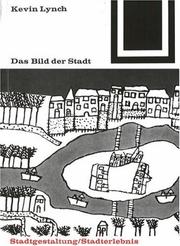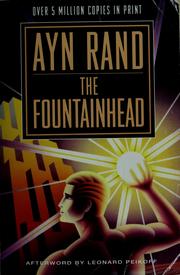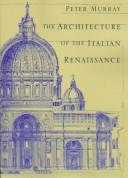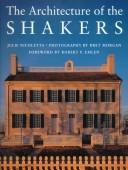Are you fascinated by architecture and the stories behind iconic buildings? Whether you’re an architecture enthusiast, a history buff, or simply love a good read, there’s a book on buildings for you. From stunning photographs to in-depth narratives, these buildings books offer a fascinating look at the world’s most famous structures. Dive into our list of the 20 best books about buildings, and discover the captivating tales and breathtaking designs that have shaped our world.
Contents
- 1 20 Best Books About Buildings
- 2 The Architecture of Happiness
- 3 The Death and Life of Great American Cities
- 4 The Image of the City
- 5 Delirious New York
- 6 The Fountainhead
- 7 The Poetics of Space
- 8 The Eyes of the Skin
- 9 The Architecture of the City
- 10 The Ten Books on Architecture
- 11 The Architecture of the Well-Tempered Environment
- 12 The Architecture of the Jumping Universe
- 13 The Architecture of the Everyday
- 14 The Architecture of the Absurd
- 15 The Architecture of the Italian Renaissance
- 16 The Architecture of the Arkansas Ozarks
- 17 The Architecture of the Shakers
- 18 A Field Guide to American Houses
- 19 The Language of Cities
- 20 Delirious New York: A Retroactive Manifesto for Manhattan
- 21 From Bauhaus to Our House
- 22 Conclusion
- 23
- 24 Books about Inspirational Women: 2024 Updated Guide to Essential Reading
- 25 Books about Trust Issues: 2024's Best Titles
- 26 Discover Best Bondage Books: 20 Key Titles, 2024 Updated
20 Best Books About Buildings
The Architecture of Happiness
by Alain de Botton
The Architecture of Happiness by Alain de Botton is a thought-provoking exploration of the emotional and psychological impact of architecture on our lives. This captivating book delves into the relationship between our surroundings and our well-being, examining how buildings shape our moods and perceptions. De Botton’s insightful analysis takes readers on a journey through the history of design, from ancient structures to modern skyscrapers, and offers a fresh perspective on the significance of architecture in our daily lives. With eloquent prose and profound insights, this book about buildings is a must-read for anyone interested in the intersection of aesthetics, psychology, and design. The Architecture of Happiness will inspire readers to look at the world around them with newfound appreciation and understanding.
The Death and Life of Great American Cities
by Jane Jacobs
The Death and Life of Great American Cities by Jane Jacobs is a groundbreaking urban planning book about the vitality and functionality of city neighborhoods. This influential book on buildings challenges the conventional wisdom of urban renewal and celebrates the diverse and organic nature of city life. Jacobs argues that the key to successful city living lies in the intricate and dynamic interplay of different elements within a neighborhood. She emphasizes the importance of mixed-use buildings, human-scale urban design, and the presence of diverse businesses and activities. The book about buildings is a passionate call to action for city planners, architects, and residents to embrace the complexity and liveliness of urban environments. Jacobs’ insightful observations and persuasive arguments have made this buildings book a classic in the field of urban studies and continue to inspire discussions about the future of our cities.
The Image of the City
by Kevin Lynch
The Image of the City by Kevin Lynch is a groundbreaking book about buildings that explores the psychological and physical aspects of urban design. Lynch delves into the way people perceive and navigate the urban environment, focusing on the elements that make a city memorable and navigable. Through a combination of research and case studies, Lynch identifies five key elements—paths, edges, districts, nodes, and landmarks—that contribute to a city’s identity and its inhabitants’ sense of place. By analyzing the relationship between people and their surroundings, Lynch offers valuable insights into how cities can be designed and improved to enhance the overall urban experience. The buildings book is essential reading for urban planners, architects, and anyone interested in understanding the impact of urban design on human behavior and well-being.
Delirious New York
by Rem Koolhaas
Delirious New York by Rem Koolhaas is a captivating exploration of the architecture and urbanism of New York City. This groundbreaking book on buildings provides a unique perspective on the city’s development, focusing on the chaotic and frenzied nature of its growth. Koolhaas delves into the history of New York’s skyscrapers, the evolution of its urban landscape, and the impact of its architecture on the city’s culture and society. Through a blend of historical analysis and imaginative storytelling, Koolhaas presents a compelling narrative that unravels the complexities of the city’s built environment. Delirious New York is a must-read for anyone interested in urban design, architecture, and the dynamic forces that shape our cities.
The Fountainhead
by Ayn Rand
The Fountainhead is a captivating novel by Ayn Rand that revolves around the life of an innovative architect, Howard Roark. This book on buildings delves into themes of individualism, creativity, and the struggle between tradition and modernity. Roark’s unwavering dedication to his architectural vision and refusal to compromise his principles make him a compelling protagonist. As he faces opposition from the establishment and rival architects, the novel explores the tension between artistic integrity and societal expectations. With its rich character development and thought-provoking narrative, this book about buildings is a timeless exploration of the human spirit and the pursuit of greatness. The Fountainhead challenges readers to question their own values and beliefs while immersing them in the captivating world of architecture and design.
The Poetics of Space
by Gaston Bachelard
The Poetics of Space by Gaston Bachelard is a captivating exploration of the emotional and imaginative significance of architectural spaces. This influential book on buildings delves into the intimate relationship between the human psyche and the places we inhabit, examining the ways in which different structures shape our thoughts, memories, and dreams. Bachelard’s lyrical prose and profound insights invite readers to ponder the poetic resonance of familiar buildings, from the cozy confines of a childhood home to the mysterious depths of a cellar. By delving into the phenomenology of architecture, this book about buildings offers a unique perspective on the profound impact of our surroundings on our inner world. Whether you’re an architecture enthusiast or simply curious about the hidden meanings behind the spaces we inhabit, Bachelard’s buildings book is sure to inspire contemplation and wonder.
The Eyes of the Skin
by Juhani Pallasmaa
The Eyes of the Skin by Juhani Pallasmaa is a thought-provoking exploration of the sensory experience of architecture. In this captivating book on buildings, Pallasmaa delves into the idea that our perception of buildings goes beyond just visual appreciation, but is deeply intertwined with our other senses. He argues that the tactile, auditory, and olfactory aspects of a space are just as important as its visual aesthetics. Through evocative prose and insightful analysis, Pallasmaa challenges the conventional understanding of architecture and invites readers to reconsider their relationship with the built environment. This buildings book offers a unique perspective on the way we experience and interact with the spaces around us, making it a must-read for anyone interested in the deeper connections between people and architecture.
The Architecture of the City
by Aldo Rossi
The Architecture of the City by Aldo Rossi is a captivating book about buildings that explores the essence of urban architecture. Rossi delves into the intricate relationship between the physical structures of a city and its cultural and historical significance. Through his insightful analysis, he examines the role of collective memory and the impact of time on the buildings that shape our urban environments. With a focus on the city as a living organism, Rossi offers a thought-provoking exploration of the urban fabric and the evolution of architectural forms. This seminal work is a must-read for anyone interested in the profound connections between buildings and the communities they inhabit, and for those seeking a deeper understanding of the poetic and timeless nature of urban architecture.
The Ten Books on Architecture
by Vitruvius
The Ten Books on Architecture by Vitruvius is a classic book about buildings that has withstood the test of time. Written by the Roman architect Vitruvius, this ancient buildings book covers a wide range of topics related to architecture, including design principles, construction techniques, and the use of materials. Vitruvius delves into the importance of symmetry, proportion, and durability in building design, offering valuable insights that continue to be relevant to architects and designers today. The book on buildings also includes discussions on city planning, water supply systems, and even the role of the architect in society. Whether you’re a professional in the field or simply have an interest in architecture, Vitruvius’ work provides a fascinating look into the foundations of architectural theory and practice.
The Architecture of the Well-Tempered Environment
by Reyner Banham
The Architecture of the Well-Tempered Environment by Reyner Banham is a fascinating exploration of the relationship between architecture and technology. In this groundbreaking book on buildings, Banham delves into the ways in which buildings, or the built environment, interact with and respond to the natural environment. He discusses how technology has shaped the design and construction of buildings throughout history and how it continues to influence modern architectural practices. Banham’s insightful analysis and engaging writing style make this a must-read for anyone interested in the intersection of technology and architecture. Whether you’re an architect, a history buff, or simply curious about the ways in which buildings book have evolved over time, this book about buildings is sure to captivate and enlighten.
The Architecture of the Jumping Universe
by Charles Jencks
The Architecture of the Jumping Universe by Charles Jencks is a fascinating exploration of the relationship between architecture and the universe. In this thought-provoking book, Jencks delves into the connections between cosmology, physics, and architecture, offering a unique perspective on the design and construction of buildings. Through engaging and insightful analysis, the author examines how the principles of the universe can be reflected in the structures we create, ultimately shaping our understanding of the built environment. This illuminating book about buildings is a must-read for anyone interested in the intersection of science, art, and architecture, and how these disciplines can inform and inspire each other.
The Architecture of the Everyday
by Steven Harris and Deborah Berke
The Architecture of the Everyday, written by Steven Harris and Deborah Berke, is a captivating exploration of the built environment. This book delves into the intricate details of everyday structures, revealing the beauty and significance of the seemingly mundane. Harris and Berke offer a fresh perspective on the world around us, highlighting the artistry and functionality of buildings in our daily lives. With insightful analysis and stunning visuals, The Architecture of the Everyday is a must-read for anyone interested in the built environment. Whether you’re an architecture enthusiast or simply curious about the spaces we inhabit, this book about buildings will inspire a newfound appreciation for the structures that shape our everyday experiences.
The Architecture of the Absurd
by John Silber
The Architecture of the Absurd by John Silber is a captivating exploration of the eccentricities and idiosyncrasies found in the world of architecture. Silber takes readers on a thought-provoking journey through a diverse range of architectural marvels, shedding light on the peculiar, unconventional and sometimes outright bizarre structures that dot the global landscape. This book on buildings delves into the creative, historical and cultural aspects of these constructions, offering a fresh perspective on the relationship between art and architecture. Silber’s engaging storytelling and insightful analysis make this buildings book a compelling read for anyone with an interest in the built environment. Whether you’re an architecture enthusiast or simply curious about the unusual and fascinating world of buildings, The Architecture of the Absurd is sure to leave a lasting impression.
The Architecture of the Italian Renaissance
by Peter Murray
The Architecture of the Italian Renaissance by Peter Murray is a captivating book about buildings that delves into the magnificent structures of the Renaissance era in Italy. Murray’s insightful exploration of the buildings book takes readers on a journey through the evolution of architectural styles, from the early experiments of Brunelleschi to the grandeur of Michelangelo’s designs. Through detailed analysis and stunning visuals, the book brings to life the innovative techniques and artistic achievements that defined this transformative period in history. Whether you’re an architecture enthusiast or simply fascinated by the beauty of historical buildings, Murray’s book offers a rich and rewarding exploration of the book on buildings that shaped the landscape of the Italian Renaissance.
The Architecture of the Arkansas Ozarks
by Donald Harington
The Architecture of the Arkansas Ozarks by Donald Harington is a captivating exploration of the unique and intricate structures that dot the landscape of the Ozark region. This fascinating book delves into the rich history and cultural significance of the buildings, homes, and landmarks that define the architectural identity of the area. Harington’s meticulous research and vivid storytelling bring to life the stories behind each architectural marvel, shedding light on the craftsmanship, traditions, and influences that have shaped the Ozark’s built environment. Whether you’re a history enthusiast, architecture buff, or simply curious about the buildings book of the Arkansas Ozarks, this book offers a compelling and insightful journey through the heart and soul of the region’s architectural heritage.
The Architecture of the Shakers
by Julie Nicoletta
The Architecture of the Shakers by Julie Nicoletta is a fascinating exploration of the unique and innovative buildings created by the Shaker community. This book delves into the history and design of Shaker architecture, showcasing their simple yet elegant structures that are characterized by clean lines, functional spaces, and a deep connection to nature. Nicoletta’s thorough research and insightful analysis provide a comprehensive understanding of the Shakers’ approach to building, from their iconic meetinghouses to their humble dwellings. Through stunning photographs and detailed descriptions, readers will gain a deeper appreciation for the craftsmanship and spiritual significance of these remarkable buildings. Whether you’re an architecture enthusiast or simply curious about the Shaker community, this buildings book offers a captivating journey through an often overlooked but rich architectural tradition.
A Field Guide to American Houses
by Virginia Savage McAlester
A Field Guide to American Houses by Virginia Savage McAlester is a comprehensive and visually stunning book about buildings across the United States. This authoritative guide provides an in-depth look at the history, styles, and features of American houses, making it an essential resource for architecture enthusiasts, historians, and anyone interested in the built environment. McAlester’s detailed descriptions and beautiful illustrations bring to life the diverse array of buildings found in different regions of the country, making it easy for readers to identify and understand the architectural heritage of America. Whether you’re a professional in the field or simply a curious observer, this buildings book is sure to deepen your appreciation and understanding of the rich tapestry of American architecture.
The Language of Cities
by Deyan Sudjic
The Language of Cities by Deyan Sudjic is a fascinating exploration of the intricate and multifaceted relationship between people and the urban environment. In this captivating book about buildings, Sudjic delves into the history, design, and impact of cities, revealing the ways in which architecture and urban planning shape our lives and interactions. From the iconic skyscrapers that define city skylines to the intimate details of neighborhood streets, this buildings book provides a thought-provoking examination of the language of the urban landscape. Sudjic’s insightful analysis invites readers to see cities in a new light, offering a deeper understanding of the connections between architecture, culture, and society. Whether you’re a city enthusiast, architecture buff, or simply curious about the world around you, The Language of Cities is a must-read for anyone interested in the built environment.
Delirious New York: A Retroactive Manifesto for Manhattan
by Rem Koolhaas
Delirious New York: A Retroactive Manifesto for Manhattan by Rem Koolhaas is a thought-provoking book about buildings that explores the architectural history and development of New York City. Koolhaas delves into the chaotic and exhilarating nature of Manhattan, examining its built environment through a unique lens. The book presents a captivating narrative that intertwines architectural design with the city’s social and cultural fabric, offering a fresh perspective on the urban landscape. Koolhaas’s writing is both insightful and engaging, making this buildings book an essential read for anyone interested in the intersection of architecture and urban life. Delirious New York is a compelling exploration of the built world and the dynamic forces that shape it, making it a must-read for architecture enthusiasts and city dwellers alike.
From Bauhaus to Our House
by Tom Wolfe
From Bauhaus to Our House by Tom Wolfe is a captivating exploration of the evolution of architecture in America. In this book on buildings, Wolfe takes readers on a journey through the history of modern architecture, offering sharp and witty commentary on the impact of the Bauhaus movement on American buildings. Through his keen observations and colorful anecdotes, Wolfe dissects the rise of modernism and its influence on the urban landscape. He delves into the world of architects, critics, and developers, shedding light on the cultural and societal forces that have shaped the buildings we see today. With his signature blend of humor and insight, Wolfe presents a thought-provoking critique of the modernist movement and its impact on our cities. Whether you’re an architecture enthusiast or simply curious about the history of buildings, this book about buildings is sure to leave you with a fresh perspective on the structures that surround us.
Conclusion
Exploring the world of architecture and construction through literature can be a fascinating journey. The 20 best books about Buildings offer a diverse range of perspectives and insights into the history, design, and cultural significance of various structures. Whether you’re interested in iconic landmarks, innovative designs, or the evolution of architectural styles, these books provide a rich exploration of the built environment. From ancient wonders to modern marvels, these books about buildings invite readers to appreciate the artistry and engineering behind some of the world’s most remarkable edifices.
Which Buildings book is best?
The best book on Buildings can vary with personal preference, but three widely recommended titles are:
- The Architecture of Happiness by Alain de Botton,
- The Death and Life of Great American Cities by Jane Jacobs,
- The Image of the City by Kevin Lynch.
Each offers valuable insights and could be a great starting point.
What are the best books to learn about Buildings?
For those looking to learn about Buildings, there is a wealth of literature that can provide a comprehensive understanding of the subject. Some of the most highly recommended books include:
- The Architecture of Happiness by Alain de Botton,
- The Death and Life of Great American Cities by Jane Jacobs,
- The Image of the City by Kevin Lynch,
- Delirious New York by Rem Koolhaas,
- The Fountainhead by Ayn Rand,
- The Poetics of Space by Gaston Bachelard,
- The Eyes of the Skin by Juhani Pallasmaa,
- The Architecture of the City by Aldo Rossi,
- The Ten Books on Architecture by Vitruvius,
- The Architecture of the Well-Tempered Environment by Reyner Banham
These books offer a range of perspectives on Buildings, covering various aspects and approaches to the subject.
What are the best books on Buildings?
The best books on Buildings include:
- The Architecture of Happiness by Alain de Botton,
- The Death and Life of Great American Cities by Jane Jacobs,
- The Architecture of the Jumping Universe by Charles Jencks,
- The Architecture of the Everyday by Steven Harris and Deborah Berke,
- The Architecture of the City by Aldo Rossi,
- The Poetics of Space by Gaston Bachelard.
Each offers unique insights into the subject. While these books on the topic of Buildings are highly regarded, it’s important to note that any list of ‘best’ books is subjective and reflects a range of opinions.
What are the best Buildings books of all time?
Choosing the best Buildings books of all time can vary depending on who you ask, but seven titles that are often celebrated include
- The Architecture of Happiness by Alain de Botton,
- The Death and Life of Great American Cities by Jane Jacobs,
- The Fountainhead by Ayn Rand,
- The Architecture of the City by Aldo Rossi,
- The Architecture of the Well-Tempered Environment by Reyner Banham,
- The Architecture of the Everyday by Steven Harris and Deborah Berke,
- and The Architecture of the Jumping Universe by Charles Jencks.
Each of these books has made a significant impact in the field of Buildings and continues to be influential today.

























